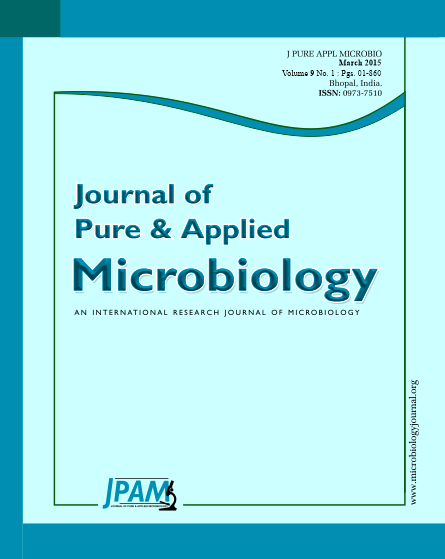Lymphatic filariasis is a major health problem in many tropical countries. Acute adenolymphangitis(ADL) is the important clinical manifestation of lymphatic filariasis which contributes significantly to the progress of lymphodema. It is increasingly being recognised that secondary bacterial infection plays an important role in the aetiology of ADL. The present study has been envisaged to identify the different bacterial pathogens and their sensitivity patterns isolated from skin, wound, lymph nodes and abscesses of filariasis patients using different combination of culture media i.e. blood agar, macConkey agar, mannitol salt agar from Balasore and Bhubaneswar area. Out of total 80 samples collected from different sites of filaria patients, 69(86.3%) were culture positive and 11(13.79%) were culture negative. Out of total culture positive samples Staphylococcus aureus were 38(55.1%), Staphylococcus epidermidis 13(8.9%), Streptococcus pyogens 12(17.4%) and E.coli 6 (8.7%). The common sensitivity pattern for Staphylococcus aureus, Staphylococcus epidermidis, Streptococcus pyogens and E.coli were kanamycin, rifampicin, streptomycin, ciprofloxacin, erythromycin, co-trimoxazole , gentamicin, tetracycline and they were resistant to ampicillin, bacitracin, chloramphenicol, neomycin, nalidixic acid, penicillin. Different authors have reported low prevalence of Streptococcus infection associated with elephantiasis cases. Low prevalence of Staphylococcus epidermidis, Staphylococcus aureus and Bacillus subtilis, etc have also been reported by other workers. In the present investigation we have isolated the similar type of bacterial infection associated with filarial patients. This type of study should be conducted by enrolling more number of filaria patients from different areas of Odisha.
Filariasis, Adenolymphangitis (ADL), Bacterial pathogens, Antibiotic sensitivity
© The Author(s) 2015. Open Access. This article is distributed under the terms of the Creative Commons Attribution 4.0 International License which permits unrestricted use, sharing, distribution, and reproduction in any medium, provided you give appropriate credit to the original author(s) and the source, provide a link to the Creative Commons license, and indicate if changes were made.


